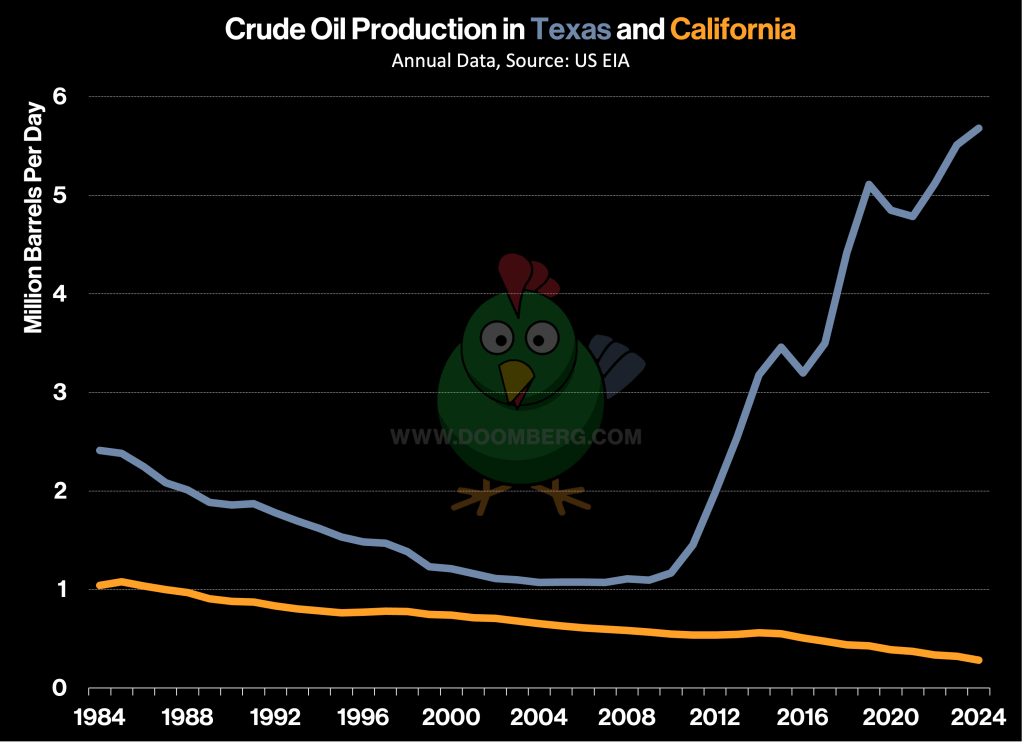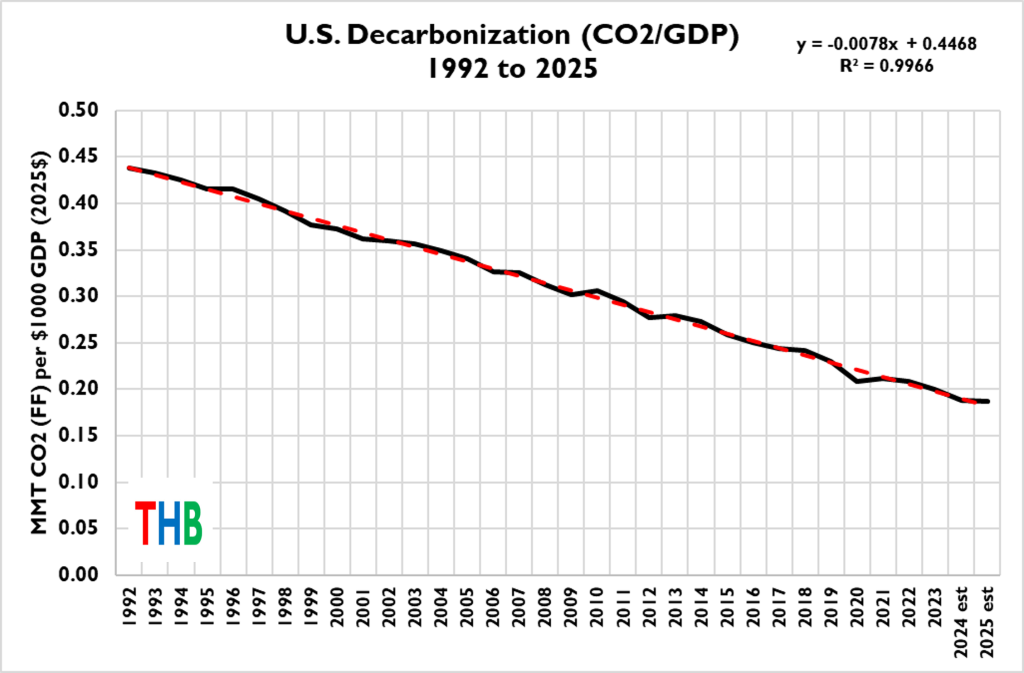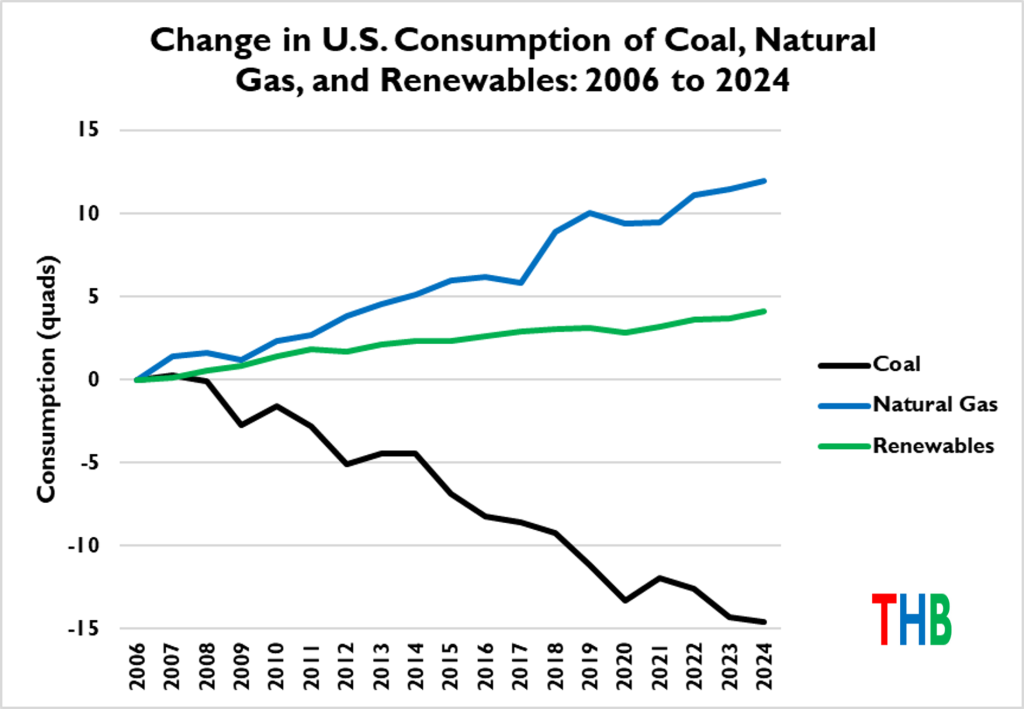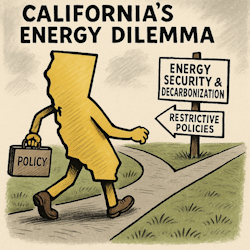Lessons from National Trends
The California Contradiction
According to Doomberg’s “Permission Slips” analysis, California possesses substantial untapped oil and gas resources, including the Monterey shale deposit that many residents don’t even know exists. California has deliberately restricted its energy development, with crude oil production declining from approximately 1 million barrels per day in 1984 to less than 0.5 million barrels per day by 2024.
Meanwhile, other states have embraced resource development and achieved dramatic production increases. Texas has increased production to nearly 6 million barrels per day.

This policy choice occurs against a backdrop of remarkable national progress on climate goals. Roger Pielke Jr.’s analysis in “The Most Amazing Climate Policy Figure” reveals that the U.S. has achieved consistent decarbonization in an almost perfectly linear trend from 1992 to 2025. This despite political volatility across multiple administrations.

The Migration Factor
California’s restrictive energy policies coincide with significant population outflow. Doomberg reports that California lost nearly 240,000 residents to domestic migration in 2024, with major moving companies confirming more people leaving than arriving. Many California emigrants have relocated to energy-producing states like Colorado, bringing their political preferences and contributing to policy changes that restrict energy development in their new homes.
National Climate Success Without California Resources
Pielke’s data shows that U.S. decarbonization has been driven primarily by technological advancement, particularly the natural gas boom from fracking and horizontal drilling, rather than restrictive policies. Since 2006, the U.S. economy has “decoupled” GDP growth from emissions, with natural gas replacing coal as a bridge fuel while renewables expand.

The California Choice
For Californians, these analyses present a policy question: California could contribute to both U.S. energy security and continued decarbonization by developing its resources with modern, cleaner technologies, following the national model that has successfully reduced emissions while growing the economy. Alternatively, California can maintain its current restrictive approach, but this choice increasingly affects other states as California emigrants reshape energy policies elsewhere.
The data suggests that smart energy development and environmental progress are not mutually exclusive. The U.S. has achieved both simultaneously for over three decades. California’s challenge is whether it will participate in this national success story or continue policies that may ultimately undermine both energy security and climate goals.
Sources:
“Permission Slips” by Doomberg (June 20, 2025)
“The Most Amazing Climate Policy Figure” by Roger Pielke Jr. (June 16, 2025)

